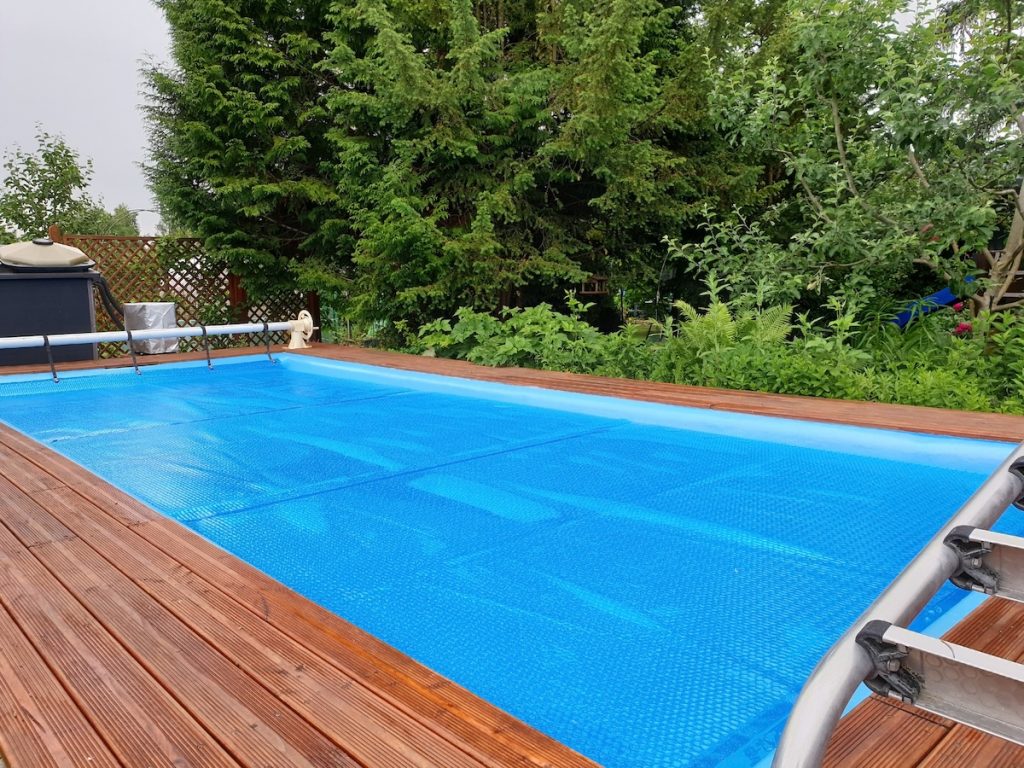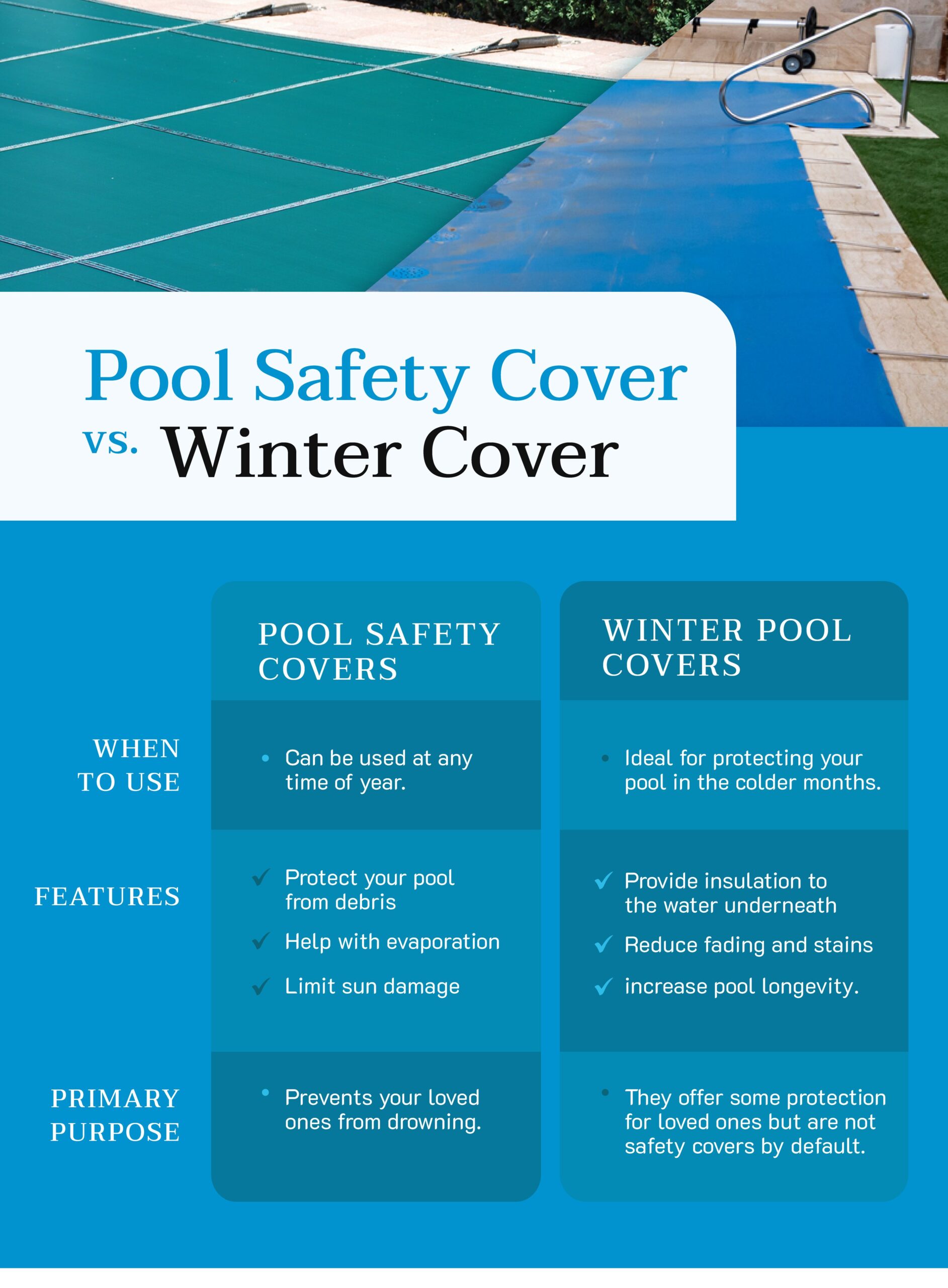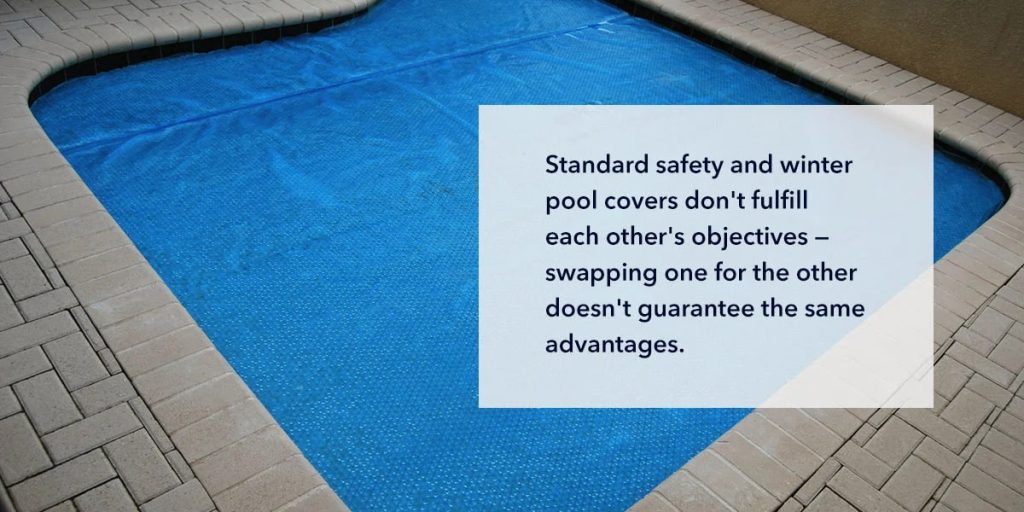

Pool covers are essential in maintaining and upkeep your pool, but different types of covers serve different purposes. In this article, we will break down the differences between safety and winter pool covers and how they can help you maintain your pool.
Pool covers fit over the pool area to prevent debris, leaves and dirt from landing in the water and reduce water loss from evaporation. They also give heated pools the advantage of reduced energy costs as the pool cover acts as insulation and maintains the water temperature.
You can choose between a safety and winter pool cover, both of which guard against debris and evaporation. Safety covers help protect people and animals from accidentally falling into the water. Winter covers offer additional insulation against winter temperatures.

You can use safety covers at any time of the year to protect your pool and your loved ones when you aren’t using the pool. A safety cover also offers the following advantages:
Safety covers are available in mesh or solid versions. The mesh option allows water to run into the pool but catches leaves and large debris. The solid option blocks water, dirt and sunlight. Mesh covers tend to be lighter and less expensive, while solid covers are typically more durable.
Place winter safety pool covers over the pool during the winter months. The advantages of using an inground pool winter cover include the following:
Winter covers are typically solid, although there are mesh ones available. While they offer some protection for loved ones, winter covers are not safety covers by default. Consult a professional about your winter cover options to discover which ones also provide safety protection.

Standard safety and winter pool covers don’t fulfill each other’s objectives — swapping one for the other doesn’t guarantee the same advantages. However, you may be able to find covers that provide both safety and winter protection!
A professional can help you replace your pool cover with the materials and options that fulfill your concerns and priorities. Your pool size and shape will also influence what covers are available.
If you still have questions about pool covers, take a look at these frequently asked questions about winter and safety pool covers.
You can keep your winter pool cover from blowing off by anchoring it to the surrounding deck. Often the anchors are recessed when not in use as a safety precaution. Professionals and pool owners use a special drill or tool to bring out when needed to hold the pool cover in place.
Anchor screws usually provide enough strength to keep your cover on during harsh weather. Contact a professional to secure your cover tightly and prepare your pool for winter.
Winter pool covers are usually needed in areas that have:
The objective is to protect the pool from damage that harsh weather will cause during this time. A winter pool cover helps prevent damage from the weather or associated debris. You can take your cover off when the spring months arrive and your pool should be ready to use almost immediately.
Preparing your pool for winter involves several steps, including preparing your water and securely placing the winter pool cover. If your inground pool gets weekly professional maintenance, they should tell you when it’s time to get the winter cover out. Otherwise, here are some common signs that can indicate it’s time to start thinking about winterizing your pool:
Getting a pool cover can save you costs and provide your pool with the protection it needs. Lotus Pools offers a selection of services, including repairing or replacing your pool cover.
If you want a new safety or winter pool cover, Lotus pools can help. With over 15 years of experience in custom inground swimming pools, we can guide and assist you in ensuring you have the right pool cover for your needs.
Ensure you are the first to enjoy your pool after the cold months by scheduling a service call with one of our experienced pool experts.